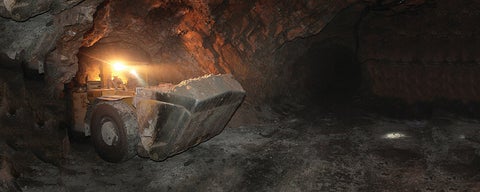
The mining industry has come a long way since blind pit ponies pulled wheeled carts filled with coal from the depths of the earth. Mining is now very sophisticated with machinery to drill, grind, crush, blast and transport ore up to the surface.
However, operators of mobile mining equipment (such as load-haul-dump (LHD) vehicles) are still at risk for musculoskeletal disorders stemming from poor postures adopted to compensate for impaired sightlines. Drivers cannot see where they are going because of any number of obstacles including wheel-well covers, buckets, light posts, booms, radio remote boxes, elevated engine profiles and air intake cylinders. In order to avoid obstacles, operators have to rotate, flex, stretch and bend their bodies in very awkward positions, all leading to an increased risk for musculoskeletal disorders.
In 2008, the Centre of Research Expertise for the Prevention of Musculoskeletal Disorders (CRE-MSD) funded a study to quantify and identify these musculoskeletal hazards. The study lead by Dr. Tammy Eger from Laurentian University, with co-researchers from Laurentian, the University of Waterloo and Queen’s University identified LHD design features associated with poor line-of-sight and discussed the close link between line-of-sight and posture. The study used multiple methods including eye-tracking, digital video cameras and a seat pressure measurement system to model line-of-sight from the operator’s position in the vehicle. The study also recommended the installation of cameras to enable the LHD operator to “see” blindspots. In 2012, CRE-MSD funded Dr. Alison Godwin and colleagues at Laurentian University to evaluate the impact of placing camera monitors inside the LHD cab. Dr. Godwin and colleagues, along with industry partners (Winsted Group and PROVIX cameras) and the Ontario mining industry are currently evaluating the benefits of a four camera system to improve line-of-sight and the ideal placement of camera monitor(s) in cab to minimize MSD risk. Several LHD vehicles have already been retrofitted and anecdotal feedback from the LHD operators has been very positive.